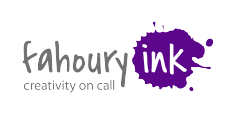“Meet your customers where they are.”
You’ve doubtless heard this marketing phrase — which somehow manages to be simultaneously blindingly obvious and frustratingly vague — a time or two.
It’s right up there with “take this offline” and “are we aligned on this?” in the pantheon of meaningless business-speak. But stick with me here, because underneath the jargon is actually something useful on a bunch of levels.
In its most common iteration, “meet your customers where they are” means stop trying to force customers to come to you, and instead go where they’re already hanging out.
Quick example: Let’s say you run a local bakery. Your customers aren’t sitting around thinking, “Gee, I wonder what’s new in the artisanal bread world?”
What they ARE doing:
- Scrolling Instagram at 11 PM, drooling over food photos
- Frantically googling “last-minute birthday cake near me” at 8 AM
- Scanning local Facebook groups for restaurant recommendations
- Checking their email for nearby lunch specials while stuck in boring meetings
Meeting customers where they are means being present in these moments. Having food porn photos ready for that late-night Instagram scroll. Making sure your Google business profile clearly shows you can do same-day cake orders. Being active in those local Facebook groups without being spammy or self-serving.
The “but I’m just a small business” reality check
You don’t have the resources of a major corporation or a team of social media wizards. Same here so we feel ya. Good news: you don’t need them. Here’s your practical, won’t-break-the-bank action plan:
Play detective. Spend a week really paying attention to how your current customers found you. Actually ask them. Take notes. This is your gold mine of information.
Pick your battles. You don’t need to be everywhere. If your detective work reveals that 80% of your customers found you through Instagram and local Facebook groups, guess where you should focus your energy? (Hint: Not on creating a TikTok dance challenge)
Show up consistently. Being present where your customers are doesn’t mean posting once and ghosting them like a bad Tinder date. Set a realistic schedule for engagement and stick to it.
Add value by sharing your expertise. Running a bakery? Share tips for storing bread properly or what to look for in a good sourdough. Be helpful first, promotional second.
The “where” goes beyond social media
Here’s where most businesses mess up: they think “where they are” just means which social media platforms customers prefer. But it’s way more than that. Success also means meeting customers where they are financially, intellectually, even emotionally.
Some examples:
- Your target customer might wish they were scrolling Instagram on their luxury yacht, but if they’re in reality on a ramen noodle budget, your premium-priced services aren’t “exactly meeting them where they are.” This means creating product tiers for different budget levels or offering payment plans when it makes sense.
- What about prospects whose knowledge levels about your product or service vary wildly? Meeting customers where they are means breaking down complex concepts into bite-sized pieces and providing educational resources that help them become more educated buyers.
- Consider for a minute the emotional state of your typical prospect. Are they stressed, ready to splurge or confused and overwhelmed? In this case, meeting them where they are emotionally means adjusting your approach accordingly. Maybe your super peppy sales pitch needs to be toned down for the stressed-out bride. Maybe your emergency service needs more reassurance and less technical jargon.
Other considerations include life stage factors (different pain points, priorities and decision-making processes) and cultural contexts (values, traditions and preferences).
The bottom line: Focus where it matters
Meeting customers where they are isn’t about being everywhere or trying every new platform that pops up. It’s about truly understanding buyers’ realities — their hangouts, their budgets, and their knowledge levels — and adapting your approach accordingly.
Think of it less as a grand marketing strategy and more as basic empathy. Sometimes the simplest advice really is the best — even if it does come wrapped in buzzword packaging.

